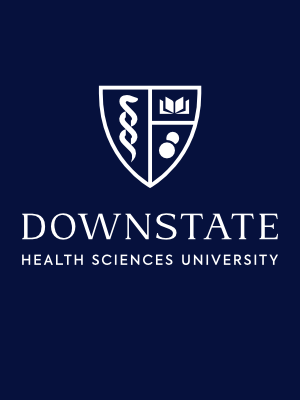
Harold Neimark, PhD
Associate Professor Emeritus
Department of Cell Biology
- PhD Microbiology, University of California at Los Angeles, 1960
Bacterial Evolution to Parasitism and Characterization of Uncultured Bacterial Pathogens
Research in this laboratory is directed at understanding the evolutionary processes that led to the formation of the large class of parasitic and pathogenic microorganisms called mycoplasmas. Mycoplasmas are prokaryotes with the general characteristics and cellular organization of bacteria, but in contrast to bacteria they have no cell walls and they are the smallest known cells capable of independent replication. Mycoplasmas also are distinguished from the majority of bacteria by the small size of their chromosomes.
Previously I showed that mycoplasmas descended from walled bacteria and identified streptococci as the antecedents of a major mycoplasma division, the acholeplasmas. I compared the chromosomes of streptococci and acholeplasmas and demonstrated that the reduction in genome size in these mycoplasmas is accompanied by losses of several entire sets of ribosomal RNA genes.
More recent studies utilizing highly specific antisera against glycolytic enzymes show that another main division, the "small chromosome" Mycoplasma (the most numerous group of mycoplasmas) are also related closely to the lactic acid bacteria. These findings support our thesis that mycoplasmas evolved from walled bacteria by substantial losses of chromosomal material.
It is now recognized that closely related bacteria have maintained similar genetic maps, and several lines of evidence suggest that the arrangement of genes in the chromosome may have selective value. Currently, I am using cloned conserved genes as map markers to study chromosomal organization in a small chromosome Mycoplasma. Specific chromosome segments from this mycoplasma will then be compared to homologous chromosome segments from the nearest lactic acid bacterial relative.
It has also been observed that certain mycoplasma species display among their strains a marked heterogeneity in the electrophoretic pattern of their cell proteins or in chromosomal restriction patterns, while other species are quite homogenous. The conserved gene markers are being used to elucidate the basis for this intraspecies variation.
Another area of research involves the examination of several important human diseases that are suspected of being caused by bacterial infections but where etiologic agents have not been identified. We have designed and tested oligonucleotide primers capable of detecting bacterial nucleic acids with great sensitivity (in collaboration with C. Steinman, Department of Medicine). These primers have allowed the detection of hitherto unrecognized bacteria in patient specimens. [see Editorial, N.E.J. Med. Dec. 6, 1990]
A related area of study involves uncultured bacteria. In addition to diseases of unknown etiology, a number of animal and plant diseases are associated with either cell wall-less or walled prokaryotes that are observed in hosts, but have defied extensive efforts at cultivation and appear to be unculturable in vitro. We have developed procedures that have allowed the isolation and size estimation of full-length chromosomes from uncultured prokaryotes and utilized these procedures [in collaboration with B. Kirkpatrick, University of California, Davis; E. Seemuller, Federal Research Center for Plant Protection, Germany, and others] to study an important group of plant pathogenic prokaryotes called mycoplasma like organisms (MLOs). Plant MLOs occur worldwide and are believed to cause more than 200 plant diseases, including many diseases of economically important food crops. These procedures have permitted the isolation of entire chromosomes -- virtually free of contaminating host nucleic acids -- from these nonculturable prokaryotes and made them available for molecular genetic analysis. Studies are also underway on nonculturable animal MLOs, including the Grey Lung "Virus" [in collaboration with R. Leach, Central Public Health Research Laboratory, London, England] and .
Recently we have designed polymerase chain reaction (PCR) primers for the rapid laboratory diagnosis of tuberculosis (in collaboration with Steve Carlton, Cell Biology). These primers produce specific DNA fingerprints directly from Mycobacterium tuberculosis as well as certain other mycobacteria including M. avium-M. intracellulare complex strains. The assay shows considerable promise and work is continuing.
- Neimark, H., D. Mitchelmore, and R.H. Leach. 1998. An approach to characterizing uncultivated prokaryotes: the Grey Lung agent and proposal of a Candidatus taxon for the organism, Candidatus Mycoplasma ravipulmonis'. Int. J. Sys. Bacteriol. 48: 389-394.
- Marcone, C., H. Neimark, and E. Seemuller. 1999. Genome sizes of phytoplasmas composing major phylogenetic groups and subgroups. Phytopathol. 89:105-110.
- Neimark, H., K.-E. Johansson, Y. Rikihisa, and J.G. Tully. 2001. Proposal to transfer members of the genera Haemobartonella and Eperythrozoon to the genus Mycoplasma with descriptions of Candidatus Mycoplasma haemofelis, Candidatus Mycoplasma haemomuris, Candidatus Mycoplasma haemosuis and Candidatus Mycoplasma wenyonii. Internat. J. Syst. Evolut. Microbiol. 51:891-899.
- Neimark, H. 2001. Haemotrophic Mycoplasmas (Containing the former rickettsia genera Haemobartonella and Eperythrozoon). In: The encyclopedia of arthropod-transmitted infections. Edited by M.W. Service. Wallingford, U.K. CABI Publishing.
- Neimark, H., Barnaud, A., Gounon, P., Michel, J.C., Contamin, H. 2002. The putative haemobartonella that influences Plasmodium falciparum parasitaemia in squirrel monkeys is a haemotrophic mycoplasma. Microbes Infect. 4:693-698.